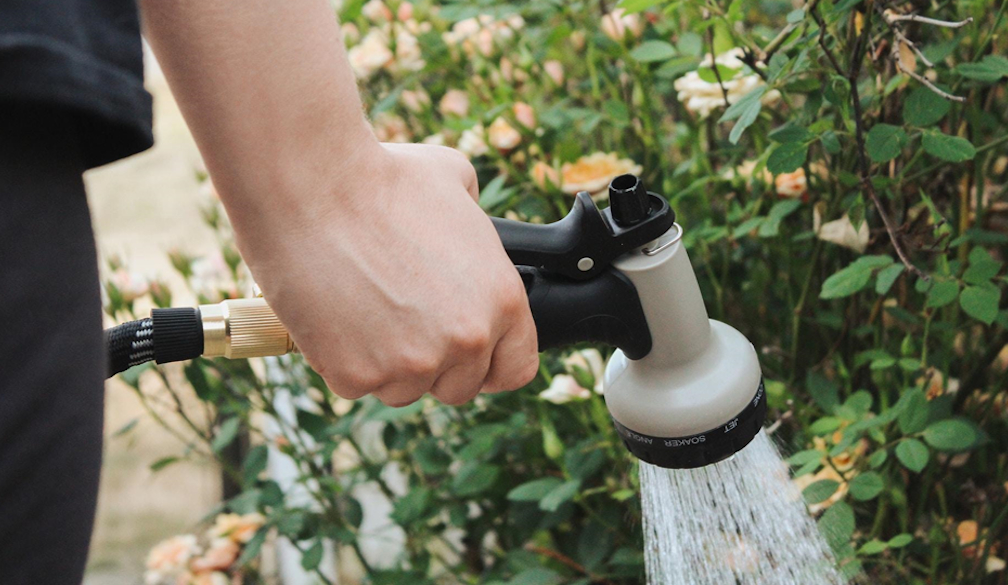Water Wisely: Discover the Best Garden Watering Tools for Your Needs

Maintaining a lush and thriving garden requires more than just sunlight and soil. Proper watering is a fundamental aspect of gardening that can make or break the health and vibrancy of your plants. To discover how to water wisely, let’s discuss the best watering tools for your needs to help you achieve your gardening goals efficiently and sustainably.
Why proper watering is important for plants
Before getting into specific watering tools, it’s important to understand why proper watering shouldn’t be taken lightly:
- Optimal growth: Adequate water supply is vital for plant growth. Water is a primary component in photosynthesis, the process by which plants convert sunlight into energy. Without enough water, plants cannot produce the energy needed for growth and development.
- Nutrient uptake: Water serves as a medium for transporting essential nutrients from the soil to the plant’s roots. Proper watering ensures that plants can access the nutrients they need for healthy development.
- Disease prevention: Overwatering can lead to root rot and other fungal diseases, while underwatering can stress plants and make them susceptible to pests and diseases. Maintaining the right moisture level helps prevent these issues.
- Environmental impact: By watering efficiently, you can reduce water waste and minimize the environmental impact of gardening. Conserving water is not only eco-friendly but can also save you money in the long run, especially when it comes to water bills.
Selecting the right watering tools
The choice of watering tools depends on various factors, including the size of your garden, the efficiency you expect, the types of plants you are growing, and the layout of your garden. With that in mind, here are some of the best ways you can keep your plants nourished and hydrated properly.
1. Garden hose
One of the most versatile watering tools is the ever-reliable garden hose. Ideal for larger areas, it offers the flexibility to reach different areas of your garden with ease. While convenient, it’s essential to use them wisely to prevent overwatering.
To ensure this, attach a nozzle with adjustable settings to control the water flow and avoid wasting this precious resource. Consider investing in garden hose reels for convenient storage and to prevent tangles that can obstruct water flow. These watering tools are excellent for huge areas with a variety of plants. Lawns, in particular, benefit from even and consistent watering to maintain their lush green appearance.
2. Watering can
For smaller gardens or container plants, a watering can is a classic choice, providing precise control over-irrigation. This is especially useful when you want to avoid getting water on the foliage, which can lead to fungal diseases. In addition, using a watering can will encourage a more mindful and hands-on approach to gardening, allowing you to connect with your plants on a deeper level.
Keep in mind that cans come in various sizes and materials, so choose one that suits your needs and is comfortable to handle. For example, delicate plants like African violets and ferns, which are often grown in pots, benefit from the gentle, targeted irrigation that a watering can offer. It prevents water from splashing on the leaves and causing damage.
3. Drip irrigation system
If efficiency and water conservation are high on your priority list, a drip irrigation system might be the best choice. This system delivers water directly to the roots thus decreasing the waste of water due to evaporation and runoff.
Drip irrigation is particularly beneficial for larger gardens with a variety of plants. For example, vegetable gardens with rows of crops such as tomatoes, peppers, and cucumbers benefit greatly from drip irrigation. It ensures that each plant receives a consistent supply of moisture at the root level, promoting healthy growth and reducing the risk of fungal diseases.
It can be customized to meet the specific water requirements of each plant, ensuring they receive the right amount of moisture. Moreover, it can be automated with timers and sensors, making it a low-maintenance option that conserves both water and your valuable time.
4. Watering stakes and globes
If you have potted plants and a container garden, going for watering stakes and globes is the most ingenious solution. These devices release water gradually into the soil, keeping it consistently moist without the risk of soaking off your plants. Houseplants like peace lilies and spider plants thrive when watered using watering stakes or globes.
The principle slightly differs between the two. Watering stakes are inserted directly into the soil, while globes are filled with water and inverted into the soil. Both options help maintain an optimal moisture level, which is especially critical for container plants where water can quickly evaporate from the potting mix and cause root dehydration.
5. Smart irrigation system
Smart irrigation systems use sensors and programmable controllers to automate watering based on specific plant needs and weather conditions. It allows you to set up zones for different areas of your garden and tailor the watering schedule to each zone’s requirements. What makes this systems smart is the fact you can control them remotely, usually through tablet or phone apps.
For instance, if you have a mix of plants with varying water requirements in your garden, a smart irrigation system can be programmed to deliver different amounts of water to different zones. This is especially beneficial for landscapes featuring drought-tolerant plants alongside more water-demanding ones.
6. Sprinklers
A staple among gardeners, sprinklers are ideal watering tools for larger lawns and open garden spaces. They provide even coverage and are capable of watering large areas with minimal effort on your part. Grasses, for example, need consistent moisture to maintain their vibrant green color and resist drought stress.
To make them more efficient, use them with a timer to ensure you water at the right times of day and avoid unnecessary waste due to evaporation. However, choose a sprinkler head that matches the shape and size of the area you need to water to avoid overwatering or underwatering certain spots.
Lastly
Finding the best garden watering tools can significantly impact the health and vitality of your plants, while also reducing water waste and environmental impact. Whether you have a small urban garden or a sprawling backyard oasis, there’s an irrigation solution that’s perfect for your needs. Remember, gardening is not just a hobby, but a way to connect with nature and contribute to a greener world.


